- Home
- Virginia Woolf
Genius and Ink Page 2
Genius and Ink Read online
Page 2
All reviews that appeared in the TLS were published anonymously (a practice that continued until 1974). This meant that Woolf didn’t have to fear public disapproval for her forthright views, but rather was invited to speak as part of a collective authority, assuming an expertise conferred by dint of the periodical’s prestige. Though she enjoyed experimenting subversively with the power afforded by that universal ‘we’, Woolf believed essays should always be firmly rooted in their authors’ ‘personal peculiarities’, and aimed from the very beginning to find and develop her own distinctive voice: to ‘say what I thought, & say it in my own way’. She never set out to provide an impersonal, authoritative assessment of a work or author, but something ostensibly humble, yet in fact radical and generous: to ‘offer merely our little hoard of observations, which other readers may like to set, for a moment, beside their own’. She had no interest in respectable hagiography or regurgitation of received opinion: for Woolf, a book’s interest lay in the feelings it stirred in its reader, which would inevitably – crucially – be entirely personal and subjective. Her role, as she saw it, was to share her own enthusiasms with her audience, to acknowledge and celebrate the influence of her own ‘cranks’, tastes and interests as she guided them ‘to enter into the mind of the writer; to see each work of art by itself, and to judge how far each artist has succeeded in his aim’. Her loyalty always remained with her audience, whom she imagined as ‘busy people catching trains in the morning or … tired people coming home in the evening’; when she came to collect her reviews and essays into a book, in 1925, she called it The Common Reader (borrowing a phrase from Samuel Johnson).
She was not averse to the occasional hatchet-job (‘my real delight in reviewing is to say nasty things’, she once wrote), but she insisted that ‘praise ought to have the last word and the weightiest’. This was not to be saccharine – she despaired that most reviews were ‘too short and too positive’ – but enthusiasm, she wrote, is ‘the life-blood of criticism’. Her own reviewing, she mused in her diary, was an act of ‘testifying before I die to the great fun & pleasure my habit of reading has given me’. Her evident joy courses irresistibly through these pieces. Woolf’s writing imparts a remarkable sense of how it feels to read: her exhilaration on closing Jane Eyre and feeling ‘that we have parted from a most singular and eloquent woman, met by chance upon a Yorkshire hillside, who has gone with us for a time and told us the whole of her life history’; her conviction, on reading John Evelyn’s diary, that his staid remarks were a flawed attempt to conceal a far richer, more acerbic and deeply insecure psyche. As an essayist, Woolf’s erudite, conversational style can be traced back through Montaigne, Charles Lamb, Max Beerbohm and Walter Pater, yet every piece is an utterly original distillation of her personality, wit and intellect.
‘You cast a beam across the dingy landscape of the Times Literary Supplement’, wrote Vita Sackville-West to Woolf, in the course of enumerating her lover’s most seductive qualities. No other writer would compare the experience of reading Joseph Conrad to that of Helen of Troy gazing into a mirror, sensing instantly that she was in the presence of greatness; who else would think to tell the life of naval officer-turned-novelist Captain Marryat through a series of open questions at least as engaging as any answers might be, thus revealing ‘one of the most active, odd and adventurous lives that any English novelist has ever lived’. Woolf’s work for the TLS provided a stage for her lifelong engagement with the problems and potentials of biography: she had welcomed the rise of the ‘new biography’ amid the social freedoms of the new century, which swapped lifeless panegyric for shorter, more self-aware studies, and these pieces form some of her most compelling miniature experiments in the form. She was never interested in mining works for straightforward biographical details, but sought to draw out hints at her subjects’ inner lives, through deeply sympathetic attention to the nuances of texture and atmosphere. Her character studies are imbued with the insatiable curiosity of a gossip, the insight of a novelist and the steely intellect of a great critic, whether she is imagining the young Fanny Burney and her stepsister confiding at night their secret passions, pondering whether our views on love and pain have changed since John Evelyn’s time, or lamenting the stereotype of the ‘bookish man’: ‘a pale, attenuated figure in a dressing gown, lost in speculation, unable to lift a kettle from the hob, or address a lady without blushing, ignorant of the daily news, though versed in the catalogues of the secondhand booksellers, in whose dark premises he spends the hours of sunlight’.
Bruce Richmond quickly came to consider Woolf his jewel in a cohort of reviewers that included T. S. Eliot, Henry James, Edith Wharton, George Gissing and Andrew Lang. In November 1905, Woolf breezily told a friend that the TLS ‘sends me one novel every week; which has to be read on Sunday, written on Monday, and printed on Friday. In America, as you know, they make sausages like that.’ She loved the rhythm and routine of these assignments: the feeling of alchemy as an essay ‘expands under my hands’, the satisfaction of hearing that a respected editor was ‘delighted to accept my charming article’, the excitement, on occasion, of visiting Richmond himself at the TLS office in Printing House Square, breezing past carts waiting to transport fresh bales of papers to the newsagents (‘carrying my manuscript to the Times I felt like a hack much in keeping’). At other times, when she was up against her deadline, it was an even greater frisson to find that the TLS would come to her:
I write & write; I am rung up & told to stop writing; review must be had on Friday; I typewrite till the messenger from the Times appears; I correct the pages in my bedroom with him sitting over the fire here.
‘A Christmas number not at all to Mr Richmond’s taste,’ he said. ‘Very unlike the supplement style.’
‘Gift books, I suppose?’ I suggested.
‘O no, Mrs Woolf, it’s for the advertisers.’
At first, she reviewed anything Richmond tossed her, covering cookery books and travel guides, poetry and swathes of debut novels. But in 1920, exhausted by the commitment, she decided to dictate her own terms – ‘only leading articles, or those I suggest myself’ – and felt a triumphant release ‘like a drunkard who has successfully resisted three invitations to drink’. Even when she was writing only on subjects she had chosen, she sometimes resented having to compromise with an editor: when Richmond reprimanded her for calling Henry James ‘lewd’ (‘Now poor dear old Henry James – at any rate, think it over, & ring me up in 20 minutes’), she resolved furiously to work with no one who ‘rewrites my sentences to suit the mealy mouths of Belgravia’. She wondered anxiously whether the best form of criticism was that spoken ‘over wine glasses and coffee cups late at night’. But Woolf never stopped writing for the TLS, even after she became established as a novelist and publisher and began to complain in her diary at the drudgery of ‘1,500 words by Wednesday’ which eroded the time she had for other writing. The TLS was far too integral a part of her life as a writer for her to abandon its pages. Across these decades, it provided a crucial testing-ground for radical new ideas; the books she wrote on, the authors she examined, became Woolf’s personal canon.
Each of these pieces is a gem in its own right, and deserves to be read purely for itself. Yet it is also fascinating to read these essays in conjunction with Woolf’s other work, to trace the way she grappled across projects with knotty existential questions and put her principles into practice. While she was stuck on her 1919 novel Night and Day, feeling frustrated at her inability to eschew the confines of realism, she was busy analysing the state of postwar fiction and calling for ‘new forms for our new sensations’. By the time she published ‘How It Strikes a Contemporary’, her great assessment of the stakes for literature in ‘an age of fragments’, she had completed Jacob’s Room, her formal breakthrough, and was looking ahead to Mrs Dalloway and To the Lighthouse, in which she would address the present upheaval through her experiments with structure and language. In January 1919, she began ‘
reading through the whole of George Eliot, in order to sum her up, once and for all, upon her anniversary’; that same year she opened a fresh notebook to gather her thoughts on her father’s friend Thomas Hardy, in response to a request from Richmond to ‘be ready with an article on Hardy’s novels whenever the evil day comes’. She worked sporadically on the piece (‘Thomas Hardy’s Novels’) for the next ten years. ‘I pray he sits safe & sound by his fireside at this moment’, she wrote guiltily in December 1921, having failed to finish a new draft; it was eventually published on his death in 1928. Her ongoing attempt ‘to discover the broad outlines of his genius’ was the backdrop to all her work in this formative decade.
But of all Woolf’s books, it is perhaps A Room of One’s Own (1929) that bears the closest relationship with her TLS reviews. Her sparkling essays on Charlotte Brontë, George Eliot and Elizabeth Barrett Browning are rich case studies in that book’s major theme: the way women’s lives have been, throughout history, narrowed and curtailed by pernicious social expectations. Barrett Browning’s early life shared certain features with Woolf’s own: the early deaths of a mother and beloved brother, periods of illness, a tyrannical father, and an ability to take comfort in reading ‘profusely and privately’, using books as ‘a substitute for living’. Woolf’s sympathy is palpable when she describes Barrett Browning locked in her bedroom engrossed in stories of ‘immortal improprieties’, starved of conversation or intellectual impetus. The essay ‘Aurora Leigh’ is a powerful denunciation of what it means for anyone to be forced to live inside their own mind, rather than out in the world:
She raced through folios because she was forbidden to scamper on the grass. She wrestled with Aeschylus and Plato because it was out of the question that she should argue about politics with live men and women … It cannot be doubted that the long years of seclusion had done her irreparable damage as an artist. She had lived shut off, guessing at what was outside, and inevitably magnifying what was within.
Browning’s poem Aurora Leigh, Woolf concludes, is ‘a masterpiece in embryo’: ‘a work whose genius floats diffused and fluctuating in some pre-natal stage waiting the final stroke of creative power to bring it into being’.
A Room of One’s Own was published thirteen years after Woolf’s TLS piece on Charlotte Brontë, a decade after that on George Eliot, but its citation of both writers as powerful examples of astonishing female creativity nonetheless circumscribed by social norms is testament to Woolf’s long, ongoing engagement with their work, sparked decisively in these early reviews. She planned to return to this theme in her final project, begun in autumn 1940 as bomber planes soared over her Sussex home. This was to be an idiosyncratic history of English popular culture, in which Woolf intended to examine not only ‘the germ of creation’ in writers but also the social forces that stymied imagination. Her insistence that a work cannot be understood without knowledge of the circumstances of its creation was the defining feature of her scheme, extending the principles she had developed in her biographical essays to the story of literature, and of England, in its entirety. The project was the triumphant culmination of decades of research, languishing within her ‘innumerable TLS notes’: in the surviving synopsis lie the vestiges of the year she spent devouring Elizabethan playwrights, her insatiable fascination with ‘obscure lives’, her belief in the importance of an intimate relationship between artist and audience. That work – sure to have been artful, esoteric and radical – was never finished, but these essays reveal the contours of all that might have been.
Books, Woolf insisted, come alive on encountering a reader, and change with them. Our impressions of the same book across a lifetime, she wrote, could form our own autobiography: art can only survive if new generations discover it afresh and find new pleasure in it. Woolf’s reviews richly deserve to be celebrated as works of literature worth reading and re-reading in themselves. But once this book is finished, she sends us back to the shelves, eager to see what she saw, and to discover what we feel for ourselves.
Frontispiece
Charlotte Brontë
The hundredth anniversary of the birth of Charlotte Brontë will strike, we believe, with peculiar force upon the minds of a very large number of people. Of those hundred years she lived but thirty-nine, and it is strange to reflect what a different image we might have of her if her life had been a long one. She might have become, like other writers who were her contemporaries, a figure familiarly met with in London and elsewhere, the subject of anecdotes and pictures innumerable, removed from us well within the memory of the middle-aged, in all the splendour of established fame. But it is not so. When we think of her we have to imagine some one who had no lot in our modern world; we have to cast our minds back to the fifties of the last century, to a remote parsonage upon the wild Yorkshire moors. Very few now are those who saw her and spoke to her; and her posthumous reputation has not been prolonged by any circle of friends whose memories so often keep alive for a new generation the most vivid and most perishable characteristics of a dead man.
Nevertheless, when her name is mentioned, there starts up before our eyes a picture of Charlotte Brontë, which is as definite as that of a living person, and one may venture to say that to place her name at the head of a page will cause a more genuine interest than almost any other inscription that might be placed there. What new thing, one may well ask, is to be said of so strange and famous a being? How can we add anything about her life or her work which is not already part of the consciousness of the educated man and woman of today? We have seen Haworth, either in fact or in picture; long ago Mrs. Gaskell stamped our minds with an ineffaceable impression; and the devotion of later students has swept together every trifle that may render back the echoes of that short and circumscribed life.
But there is one peculiarity which real works of art possess in common. At each fresh reading one notices some change in them, as if the sap of life ran in their leaves, and with skies and plants they had the power to alter their shape and colour from season to season. To write down one’s impressions of Hamlet as one reads it year after year, would be virtually to record one’s own autobiography, for as we know more of life, so Shakespeare comments upon what we know. In their degree, the novels of Charlotte Brontë must be placed within the same class of living and changing creations, which so far as we can guess, will serve a generation yet unborn with a glass in which to measure its varying stature. In their turn they will say how she has changed to them, and what she has given them. If we collect a few of our impressions today, it is not with any hope of assigning her to her final position, or of drawing her portrait afresh; we offer merely our little hoard of observations, which other readers may like to set, for a moment, beside their own.
So many novels once held great have gone out of fashion, or are pronounced unreadable, that we may justly feel a little anxiety when the time comes to make trial of Jane Eyre and the rest. We have suggested that a book, in order to live, must have the power of changing as we change, and we have to ask ourselves whether it is possible that Charlotte Brontë can have kept pace with us. Shall we not go back to her world of the fifties and find that it is a place only to be visited by the learned, only to be preserved for the curious? A novelist, we reflect, is bound to build up his structure with much very perishable material, which begins by lending it reality, and ends by cumbering its form. The mid-Victorian world, moreover, is the last that we of the present moment wish to see resuscitated. One opens Jane Eyre with all these half-conscious premonitions and excuses, and in ten minutes one finds the whole of them dispersed and the light shining and the wind blowing upon a wild and bracing prospect.
Folds of scarlet drapery shut in my view to the right hand; to the left were the clear panes of glass, protecting, but not separating, me from the drear November day. At intervals while turning over the leaves of my book, I studied the aspects of that winter afternoon. Afar, it offered a pale blank of mist and cloud; near, a scene of wet lawn and storm-b
eat shrub, with ceaseless rain sweeping away wildly before a long and lamentable blast.
As a room full of people makes one who enters suddenly conscious of heightened existence, so the opening passages of this book make us glow and shiver as though we stood out in the storm and saw the rain drive across the moor. There is nothing here that seems more perishable than the moor itself, or more subject to the sway of fashion than the ‘long and lamentable blast’. Nor is this exhilaration short-lived; it rushes us through the entire volume and scarcely gives us time to ask what is happening to us, nor in the end are we able to make out a very clear account of our adventures. We may reflect that this is exactly the opposite of our experience with certain other books justly numbered among the great. When we have finished The Idiot or Jude the Obscure, and even in the course of reading them, the plethoric state of mind which they induce is to be traced in a head resting on the hands, and oblivious eyes fixed upon the fire. We brood and ponder and drift away from the text in trains of thought which build up round the characters an atmosphere of question and suggestion in which they move, but of which they are unconscious. But it is not possible, when you are reading Charlotte Brontë, to lift your eyes from the page. She has you by the hand and forces you along her road, seeing the things she sees and as she sees them. She is never absent for a moment, nor does she attempt to conceal herself or to disguise her voice. At the conclusion of Jane Eyre we do not feel so much that we have read a book, as that we have parted from a most singular and eloquent woman, met by chance upon a Yorkshire hillside, who has gone with us for a time and told us the whole of her life history. So strong is the impression that if we are disturbed while we are reading the disturbance seems to take place in the novel and not in the room.

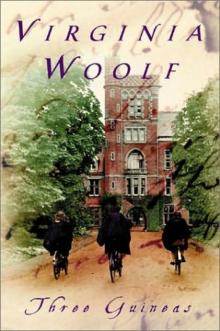 Three Guineas
Three Guineas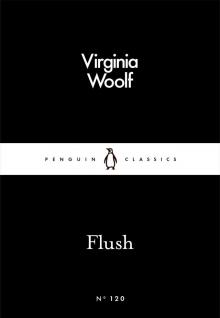 Flush
Flush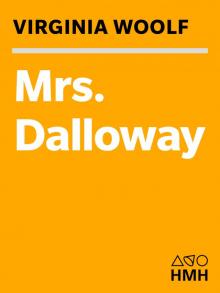 Mrs. Dalloway
Mrs. Dalloway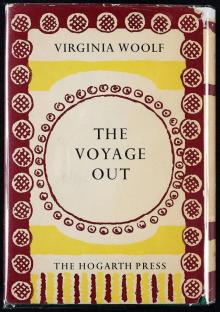 The Voyage Out
The Voyage Out A Writer's Diary: Being Extracts From the Diary of Virginia Woolf
A Writer's Diary: Being Extracts From the Diary of Virginia Woolf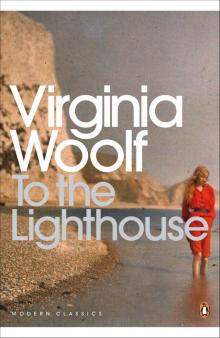 To The Lighthouse
To The Lighthouse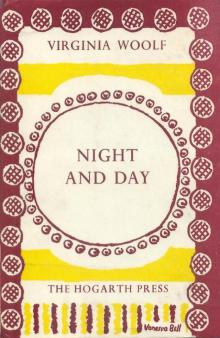 Night and Day
Night and Day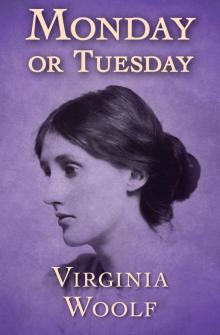 Monday or Tuesday
Monday or Tuesday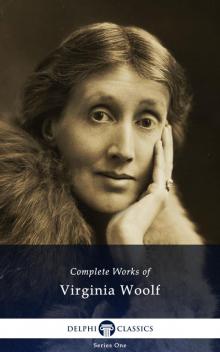 Complete Works of Virginia Woolf
Complete Works of Virginia Woolf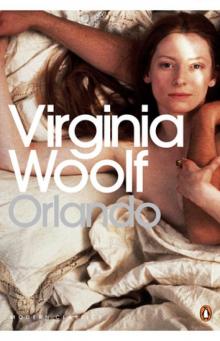 Orlando
Orlando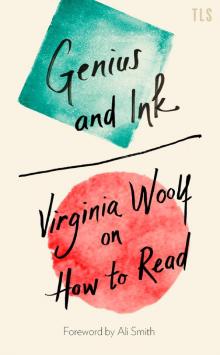 Genius and Ink
Genius and Ink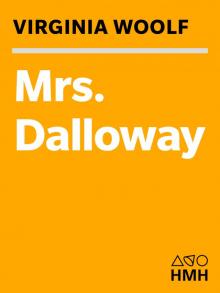 Mrs. Dalloway (Annotated)
Mrs. Dalloway (Annotated)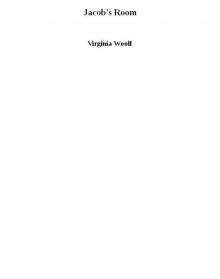 Jacob's Room
Jacob's Room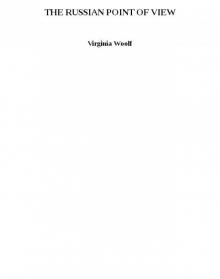 THE RUSSIAN POINT OF VIEW
THE RUSSIAN POINT OF VIEW A Writer's Diary
A Writer's Diary Woolf Short Stories
Woolf Short Stories